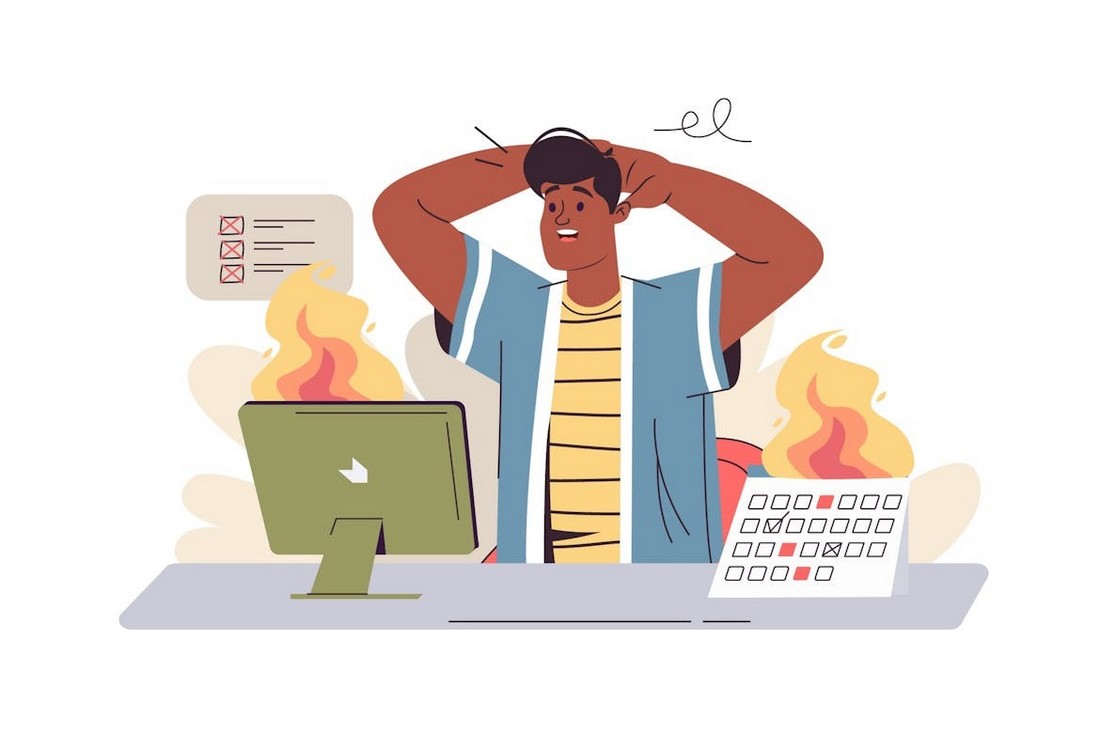How to Avoid a Bad Client: Red Flags & Warning Signs
Having to deal with a bad client is an experience every freelancer has to go through at least once or twice in their career. But, if you continue to get involved with bad clients, you need to evaluate your client onboarding process.
The key to avoiding bad clients is to spot them early during your initial conversations. If you look closely, you will notice specific red flags and warning signs that they give off. It will allow you to steer clear of potential trouble and focus on the clients who value your skills and experience.
In this guide, we will show you how to study the client, spot the red flags, and give you a few strategies to avoid bad clients entirely.
Recognizing Red Flags

Sometimes you can spot bad clients by simply reading the project description. Here are the red flags to keep an eye out for to spot them early.
Lack of Clear Communication
If a client doesn’t provide you with clear and specific details about the project, it’s an easy red flag to spot a bad client from miles away.
Some clients will include vague requirements and details in their project descriptions. Like “Design website with 5-10 pages” or “Provide a responsive logo design”. Instead of specifying what they really want, they leave room to ask for more in the future, which often leads to endless scope creep.
Unrealistic Expectations
When clients approach you with unrealistic expectations, it’s a clear sign that shows how little they know about the field, process, and work that goes into a project.
There are clients who often demand that you do the job perfectly but also give you an unrealistic deadline. Or expects you to both design and code a website, disregarding the fact that you are just a web designer.
Disrespect Towards Your Time and Work
Clients usually try to lowball their way to try and get a better quote. However, if a client continuously asks you to lower your rate while comparing you to other freelancers, it’s time to end the conversation.
It doesn’t matter if you live in a different country, work from home, or work part-time, you should always work with clients who respect your skills, experience, and the effort you put into the work.
Only the clients who don’t respect you and your work will demand you to work under ridiculously low rates.
Asking You to Copy Someone Else
If the project requires you to create something similar to an existing design. Or duplicate the work of another designer. You will never be able to meet all the requirements of that project in time and it will end up being an endless loop of revisions.
Taking inspiration from another design or even adopting good features from an existing product is perfectly fine. But when you have to make your design look exactly like something else, it will only lead to more trouble.
Warning Signs During Initial Conversations

Even if you didn’t spot any red flags, sometimes you will start seeing other warning signs of a bad client during the initial conversations and meetings.
Overemphasis on Cost Over Quality
When a client repeatedly mentions their budget and concerns about keeping the costs down, it’s a clear warning sign that you should pay close attention to.
Clients don’t need to have an unlimited budget or cater to your every need. But if they are worried about the costs of a project, you will often have to resort to using free, low-quality design resources, limit time spent on designs, and all the while deal with the client’s micromanagement at the same time.
Showing Signs of a Micromanager
“I want to be involved every step of the way.” If you see or hear these words from your client, turn around and run away.
Not all clients who want to actively be involved in project development are bad. But, there are “micromanagers” who will make your life miserable by criticizing your every move, constantly asking for revisions, and questioning everything you do.
It’s not worth putting up with these “micromanager” clients.
Lack of Respect for the Creative Process
When a client says they care more about making the project look perfect than the deadline, that usually means you should prepare for endless revision requests.
Most clients who don’t have any respect for the creative process will expect you to work like a machine and deliver results exactly the way they imagined it to be. Spot them early by asking questions and requesting lots of references.
Vague or Non-Existent References
You can’t expect every client to have a clear understanding of what they want. Most clients will have zero knowledge about the industry and it’s your job to educate them and lead them toward the right path.
However, some stubborn clients will insist on doing things their way, even when they don’t have clear expectations. So, if a client comes to you and asks you to design a brand identity that looks like “Uber and Lyft” or design a website that looks exactly like “Amazon and eBay”, prepare for the worst.
Strategies to Avoid Bad Clients

You can’t expect to recognize bad clients right away. Some are quite manipulative. They will pretend to be good in initial conversations and then switch their entire personality during the process.
With these strategies, you will be able to protect yourself from bad clients trying to take advantage of you.
1. Set Clear Boundaries and Expectations Early
Don’t be afraid to talk about boundaries and your work ethic during the initial conversations. It will not only showcase professionalism but also ensure the client won’t try to abuse their power.
Make sure to be straightforward and clear about your payment terms, revision policy, availability, and how you charge for extra work.
2. Ask for References or Work Samples
Always ask for clear and specific references to better understand the client’s expectations. This will help avoid a lot of conflicts down the line.
As we mentioned earlier, some clients, who aren’t knowledgeable in the field, won’t be much of help here. In such cases, you should take charge and work with them to come to clear terms on what the end result should look like.
3. Insist on a Detailed Contract
These days, an email conversation with you and the client acts as a digital contract agreement. But in some cases, it won’t be enough.
If you work with high-end clients, having an iron-clad contract is key to ensuring the project goes according to plan. As well as to avoid scope creeps, changing deadlines, and payment delays.
4. Show Examples
Show examples of your work to ensure the client knows what to expect from you. This will allow you to deliver results that meet their expectations.
You should also show examples related to your work process as well. Give examples of how you find design elements, how the client can leave feedback, and how you document the process.
5. Trust Your Gut
Sometimes, even when the client seems perfectly fine, you will have that unusual gut feeling that something bad is about to happen.
When you have that feeling, take a step back to evaluate everything. Don’t sign any contracts or finalize the project. Take time to think things through, ask more questions from the client, do some research, and figure out if there’s something wrong.
If you continue to get a bad feeling about the client, don’t think twice about skipping that client. Even if it’s just a feeling and you take the project, you will feel miserable the entire time being suspicious about everything. It’s just not worth all the trouble.
Conclusion
Dealing with bad clients is part of your job, especially when working as a freelance professional. So knowing how to recognize them is crucial to building a strong and successful career.
Keep in mind, that no matter how tough things are, you don’t have to put up with bad clients just to score a gig. Because if you continue to accept bad clients, you will not only harm your reputation but will also lead to bad mental health as well.